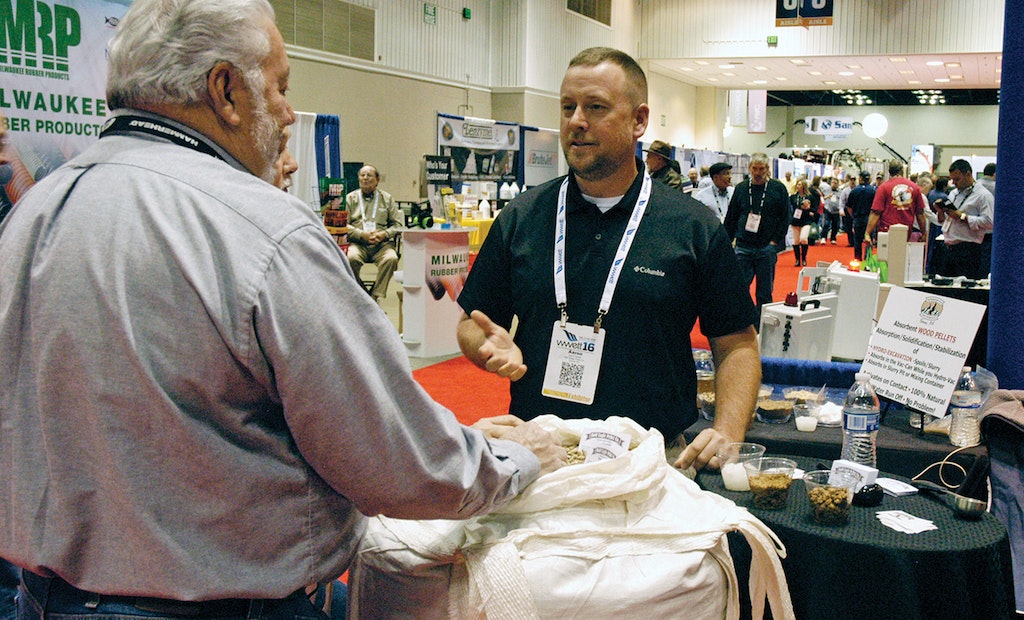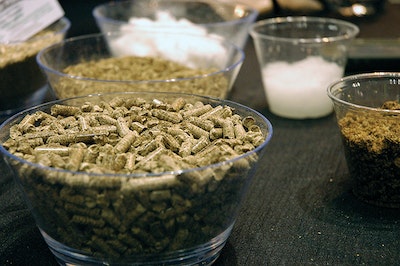
Interested in WWETT Show?
Get WWETT Show articles, news and videos right in your inbox! Sign up now.
WWETT Show + Get AlertsSpill absorption materials include cellulose, cotton, synthetics and crushed fossilized shells. Another such material, Premium Wood Pellets from Bald Eagle Pellet Co., was on display at the 2016 Water & Wastewater Equipment, Treatment & Transport Show.
The pellets, with 6 percent moisture content, can absorb up to twice their weight in water; a ton of wood pellets can take up 482 gallons. According to company owner Aaron Reese, the pellets can be used in many wastewater applications.
“The pellets will absorb untreated wastewater, slurries, frac water, hydroexcavation waste and chemicals, essentially turning it into a solid,” he says. “They are made of sawdust, so they are completely biodegradable and environmentally friendly.”
Cost reduction
As hauling and disposal costs rise, especially for liquid waste, the pellets can save money. “The savings are calculated by how much it costs to dispose of the liquid compared to a solid,” says Reese. “You’d be surprised by the large difference in price in some areas.”
The pellets can be used for stabilizing hazardous and contaminated demolition material and site reclamation. They are compressed to half-size in a high-density pellet so that one ton fits into an easy-to-move sack that comes on a standard pallet.
The pellets are made from virgin-use wood fiber, ensuring their acceptance at any landfill. They are suited for water-based spill cleanup in the oil and gas industry, but the downturn in that sector led him to seek other applications. WWETT Show attendees provided answers he hadn’t thought of.
“A landfill operator from the Bahamas saw the pellets as a potential solution to leaching issues,” says Reese. “Others said they could absorb liquids laced with phosphorus and nitrogen before it hits lakes and rivers. There are obvious uses in hauling wastewater from grease traps and car wash traps.”
Natural content
The pellets are manufactured daily from wood fiber product provided by Pennsylvania’s timber industry. “There is nothing in the pellets that can harm the environment in any way,” Reese says. The company also produces a fine sawdust called wood flour that can be used to clean oil-based spills.
Reese came to the WWETT Show to introduce himself and his product to the wastewater treatment market and to see where his pellets could fit. He’s excited to expand on the possibilities: “This show has given me a lot of ideas on what markets we can target going forward.” 814/329-2482; www.baldeaglepellet.com






